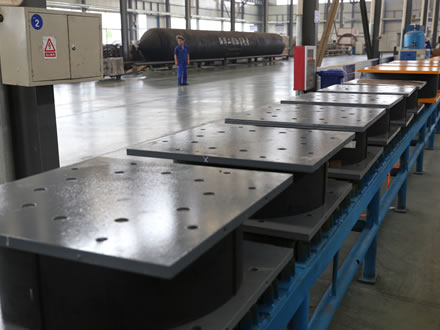| Message: | Lead rubber bearing (LRB), similar with high damping rubber bearing, belongs to seismic isolation bearing. It is composed of multiple layers of elastomeric material and vulcanized reinforced steel plates with a central lead core. Generally, the rubber for making lead rubber bearing is nature rubber and the shore hardness of the rubber changes from 45 to 55, more flexible than the elastomeric bearing pad. Lead, for making the lead rubber bearing, is a kind of metal material with large ductility, that is, when it is subjected to the vertical impact pressure, it will produce plastic shear deformation which is constrained by the steel plate and the nature rubber. And the result is that hysteresis curve of the bearing is changed and the bridge bearing has excellent damping effect. Thus when subjected to high energy compression, bridge bearing with central lead core can produce large deformations and consume most of the energy, to avoid damage. What's more, the lead rubber bearing used for bridge or construction is different. For bridge, it also needs the capacity of absorbing small vibration and rotation performance at support position. Thus, when using, you needs to integrate a variety of practical situations to choose the most favorable bearings.
Comparison of the lead rubber bearing and common rubber bearing
The damping coefficient of plain elastomeric bearing is less than 5%, while the lead rubber bearing is more than 15%. During the earthquake, the lead rubber bearing can increasingly reduce the accelerated speed and uniformly change the large force of the bridge superstructure, thus, lead rubber bearing has better seismic function.
Feature
High purity lead. The lead core in the lead rubber bearing that we adopt is high purity and does not contain any impurities.
Excellent seismic function. Lead core in the bridge bearing has high level damping of up to 30% by deforming plastically when the bearing moves laterally in an earthquake.
|
 my account
my account
 log out
log out
 my account
my account
 log out
log out
